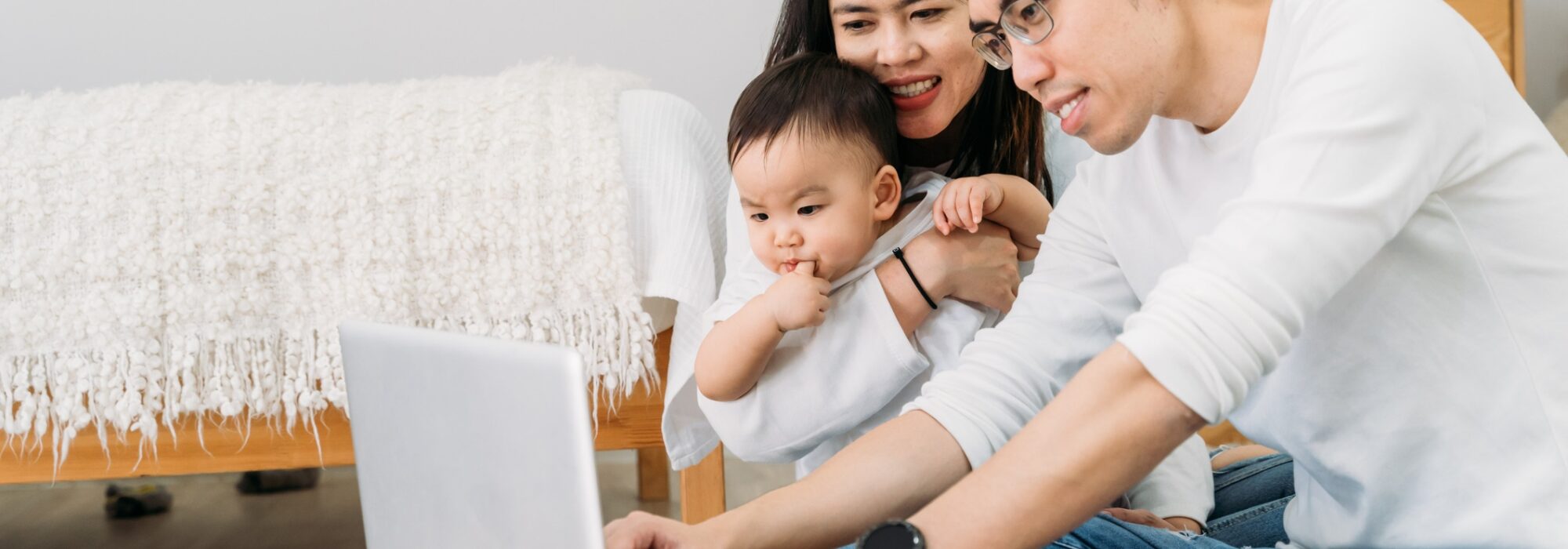
New UHL resource for families
A newly published guide for understanding best practice recommendations for children with unilateral hearing loss will help parents consider what is important for their child after receiving a diagnosis.
Parents with children with unilateral hearing loss (UHL) often have many emotions and questions about raising a child with UHL, including sorting through recommendations from their hearing care providers, potential impacts of UHL on their child’s life, and information needed to make informed decisions regarding technology, social/emotional impact, educational considerations, and communication and language access.
At the diagnosis of UHL, parents often face conflicting information, including recommendations from their hearing care provider that are different to what has been given to other families. Families are also faced with well-meaning people who say, “Don’t worry, your child still has one ‘good ear’”. Processing the emotional impact of receiving a diagnosis, as well as the subsequent decisions they face in intervention, families need support!
A recent post from a parent seeking advice from other parents on a parent-led Facebook group sheds light on this process for parents…
“Hi Everyone, My baby boy is almost 7 months old and was born with UHL, profound hearing loss in the right ear. I had gone through denial, grief and acceptance about it. I try to research as much as I could so I can do what’s best for my baby but sometimes the answers I find brings me to a spiral of negative thoughts and fear. I would like to hear from those who have UHL, what is it like growing up?
For the parents who have children with UHL, what has it been like for your family and child? What is the best treatment for UHL? BAHA, CROS, CI? Which treatment did you choose? Any advice, I would love to hear them. Is there anyone with UHL that is not bothered by their hearing? Every time I read about UHL, it makes me feel sad to know the difficulties my baby will go through. Any positive stories, I would appreciate as well. Thank you!”
Helping families know what to expect
A new resource has been developed for parents, from the parent perspective based on professional recommendations. This tool can be used to facilitate effective communication between families and providers. The following is information about how this product was developed and how it can help families as they navigate the journey of raising a child who has unilateral hearing loss.
In 2019 the Consensus practice parameter: audiological assessment and management of unilateral hearing loss in children was published in the International Journal of Audiology.
The objective of this paper was to provide recommendations to audiologists for the management of children with unilateral hearing loss (UHL) and for needed research that can lend further insight into important unanswered questions. There are five main principles addressed in the original document, which are:
- Identification and assessment
- Management and monitoring
- Technology management
- Information to be conveyed to families
- Priorities for research
Helping families understand these expert recommendations
As a result of this collaborative work from the field, a companion guide specifically for parents was created: The Guide for understanding best practice recommendations for children with unilateral hearing loss. This parent guide was created to give parents access to professional recommendations that they can process in a ‘family-friendly’ way for themselves, and also to create a basis of empowerment to discuss information with their hearing care provider. The five principles above are discussed in the parent guide, with the exception of ‘priorities for research’.
Each principle in the guide is shared in four ways:
- Components of the principle as it appears in the consensus practice parameter;
- What the principle means to families in easy-to-understand terms;
- Things to think about (e.g., technology they might want to consider);
- Additional resources.
Included in this guide is a question and answer section, with issues addressed such as: “We just got the news that my child has hearing loss. What should we do?”… “Will my child’s hearing level get worse? Will it progress to both ears?”…”I’m frustrated because everyone says, ‘Let’s just wait and see if any delays occur.’ Isn’t here something we can be doing now?” and more.
Guiding conversations and considerations
This guide is utilized in its most effective form when parents and professionals work through these conversations together. This guide will inform families of some of the considerations they can discuss with their hearing care provider. The goal is in reach for families to be able to have confidence in the decisions they are making, and in the support and recommendations they are receiving from the professionals in their lives.
As one family encouraged another family regarding the journey, “My best advice, don’t worry! Your son will be fine! Remember, he’ll grow up the way you raise him. So give him the confidence and tools he needs to be successful in life. Treat him like any other kid, have expectations, push him, celebrate his successes.”
For families to be able to find success, confidence and the tools that work for their child, they must have good information and support! This guide is intended to help families so that, indeed, every child with UHL can get the support to be successful in life.
To learn about other resources developed to advance the treatment approach for UHL, click here.
